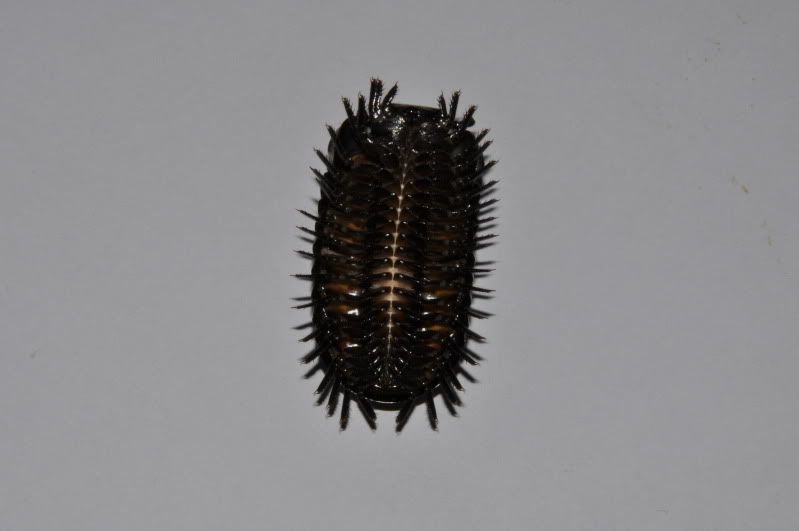Matt K
Eurycotis
Well to me "failure" is keeping something that is doomed to a death without reproduction...its a dead end road. There is no captive propogation or culture, just maintenance until dead.I'm confused as to how two years in captivity with observed growth can equate to "failure".?? Aside from a failure to breed them...1. What is the lifespan of pill millipedes in the wild, anyway? Does anybody really know this information?
2. Is it possible that the Madagascan species are simply more sensitive to the pressures of export/import and re-shipping and/or that they had received no reasonable care for the month+ long journey to the end consumer's front door?
3. Rather than an absence of good digestive bacteria, might it be the presence of our exotic (native) bacteria of fungi that is killing them?
Q: How many constitutes a 'starter culture'? Is there any reason to think 100 would be better than 12?
1a. I would think it would be several years just like other millipedes form various parts of the world- they all seem to have that in common. (assumption).
2a. Yes, thats possible, and likely, but that is a great reason to not try to get any to keep...
3a. This is possible too. So if that were the case it is again a bad idea to try to obtain and keep something if you can only keep it in a toxic environment.
I for one am completely NOT convinced its a problem with 'digestive bacteria'- that sounds like something someone made up along the way as it is a very easy and convenient explanation to assume without any facts to base it on. Did someone do a study of the gut fauna of fresh imports and then another on freshly deceased specimens to note an absence?
Shipping stress is much more plausible to me.... but there still seems to be something else otherwise I think at least a few of the ones that made it to Europe or America would have made it long term....
There is a person in a German university that I emailed whom I am hoping will chime in here.... and Orin, who I consider to be a leading domestic authority on 'pedes (among other bugs).

